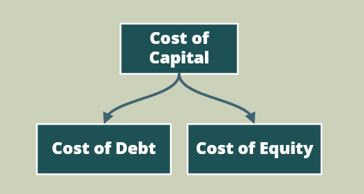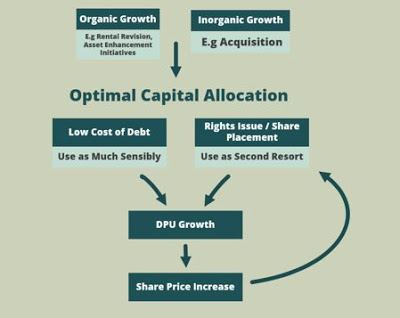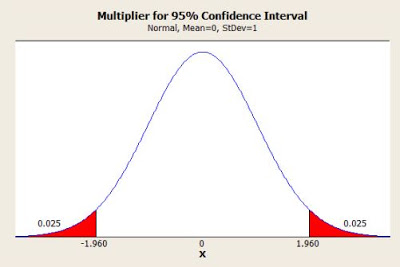Previously, I wrote an article on my thought process when selecting stocks in general and how I would deconstruct the required return I need by segregating them into X + Y + Z when putting my thinking cap. If you miss them, you can refer to the article here.
Once in a while, I try to dissipate what I have in my mind, especially knowing they are so disorganized up there and I am trying to organize them properly by documenting them down like this. The intention is to share some of my thought process and hopefully from there, we’ll get active interaction and try to improve from there.
I’ve been asked many times by readers on why I select a particular Reit. People asked me why I bought into Far East Hospitality Trust (FEHT) when all the fundamentals and share price did was to keep going down. The same was asked with Sabana Reit when I bought them previously. And the same was asked with Ireit.
I hope this article will help to answer some of those questions you have right now or if not at least stimulate your thinking process.

There are basically 3 types of strategies that I usually use for my selection of Reits.
*Before I start, I need to remind that some of the case I put out will question some of the conventional wisdom about Reits that you might know in the past.
1.) The first strategy is what I defined as the “Premium Selection”.
Some of the examples that falls under this category are companies like First Reit, PLife, Ascendas Reit, Ireit, Mapletree Comm and Keppel DC.
These are companies that are often trading at a premium to their NAV and have most people avoided them because they think these companies are “overvalued”. Hence, their arguments are always surrounding this idea of waiting for it to drop below their NAV before they would start looking at it.
While that isn’t technically wrong, it is not the most effective way of looking at it.
The most important characteristics that many people have missed are that these companies in this category often has a strong organic growth ability, decent management and optimum capital allocation that leads to the most efficient use of financial engineering that would benefits both the Reits and unitholders.
For instance, the performance of Plife and First Reit are usually structured with defensive long term lease with downside protection and an organic rental reversion through CPI linked indicators. What this means is that even if they distributed out 100% as dividends to shareholders and retained none, the portfolio would still be able to grow their earnings power organically because of the unique structure. This itself warrants the huge premium they are trading to their NAV.
On the optimum allocation of capital, many people also had this idea that gearing (debt) is bad and management should always go for as low as possible since interest rate is rising.
First of all, we should deconstruct what cost of capital is and what all companies are expected to pay on their WACC.
If you are a finance graduates, you would be familiar that there are usually only 2 ways the companies can fund its operation needs. One is via the debt and another is via the issuance of equity. The other one is of course to go in with all cash but it’s quite unlikely for a big market size.

Here’s the truth: Cost of equity is almost always more expensive than the cost of debt.
If you do your capital asset pricing model (capm), you’d know that your required rate of return is always adding up the risk premium on top of your risk free rate you can get on the street.
What I am trying to say here is that high gearing isn’t necessarily bad if you look at it from this way because as an asset manager, you either have to gear up or do an equity issuance if you want to grow either way.
If the assets have the supernatural power of Plife or First Reit, then that’s great but other than that, even an organic growth for retail or hospitality reits also need asset enhancement (AEI) and that often requires funds.
If you look at my table below, the best optimal capital allocation strategy as an asset manager is to sensibly use as much debt as possible if the cost of debt is low, bump up a sustainable DPU growth and with the share price increase, only then you start issuing rights for equity. In a perfect world where there are no disruptions, this would create a heavenly circular path that will keep going on.
George Soros in his book “The Philosophy of an Elite Investor” called this method an upward spiraling cycle which will multiple wealth and create shareholders value by many times. Those interested can try to google them and check out his philosophy.
P.S: I’ll talk in my 2nd point below later about why if an asset manager is doing this in a forcefully wrong way, it can have a completely devastating effects.

2.) The second strategy is what I would defined as the “Bottoming Up“
Some of the examples that falls under this category are companies like Far East Hospitality Trust (FEHT), Sabana Reit, OUE Comm Reit.
This strategy takes advantage of the fact that things look reasonably cheap on real value and not cheap because of inflated value.
By cheap on real value, it is when share price keeps going down because of sectors cyclical performance and not manager’s incompetency and valuation of the properties remain solid.
I’ll break this down for more clarity.
Sectors cyclical performance – This is when we believe that the company’s performance is falling because of the cyclical nature of the sectors, and that with time, the tide will turn in our favor.
Manager’s competency – This is when the management doesn’t destroy value by acquiring companies at a high valuation and/or doubling this by issuing equity rights when share price is low. In the above example that I shared, the optimum capital allocation in that table works best with the issuance of rights when the share price is at its peak, but when it is done when the share price is languishing at its low, its a total destroyer. We’ve seen this in the past with Sabana, LMIRT and many more.
Valuation of the properties – For those that aren’t familiar with how independent valuers come up with the valuation properties, they would usually choose 3 or 4 methods like comparison methods or discounted cash flows to come up with the average. The most common ones is still based on discounted cash flows as it is easy to put onto the model with the assumptions they have to make. If earnings are going down, or costs of interests are going up, or if growth is slowing down, or a combination of all of those, then the valuation of the properties will be impacted unfavorably.
When I bought my Sabana shares at 34 cents a few months ago, it is based on the thinking process that they have become too cheap from the valuation point of view. They have obviously failed on the manager’s competency part so I was waiting for it to go extremely cheap before entering. I have since divested it at 51 cents for a 50% profit. You can read my thoughts when I bought them here.
When I bought my CDLHT shares at an average price of $1.32 and making it my top position, I was thinking of the above few factors I have written. Of course, there would be some other factors too that I had to take into consideration and I can’t list them down all here, but that’s basically the geez of what’s going through my head. I am currently sitting on a 22% paper gain based on the last closing price.
When I bought my FEHT shares at an average price of 59 cents, I had to be very frank that I had the exact same idea as when I bought CDLHT. I went to their agm (here) and didn’t find any indications that the management was incompetent in any way and are destroying value. I understand that there’s a lot of resentments from the public complaining about management being incompetent but I didn’t see any evidence of it yet. I actually like that the management did not issue any rights by buying unnecessary additions at this time and that the shares are trading at a 0.67x price to book value. I should be adding more to this when I have fresh funds next month. At this moment, I am currently sitting on a 4% paper gain based on the last closing price.
3.) The third strategy is what I would called the “Reversion to the mean”.
I usually apply this strategy to more stable companies like the blue chip CapitaMall Trust, CapitaComm Trust, Suntec Reit and such.
What this strategy is basically saying is that if we take the past 10 years information and this can be in the form of dividend yield or NAV or some other metrics, I would usually buy them if the risk reward is tilted more in my favor in the hope that reversion of the mean takes place. A 75th percentile is usually good enough to make a very decent return and it is also when I would go in big.
To illustrate, if we take the past 10 year information for Capitamall Trust (CMT) and the mean is at 1.1x Price to book value, the high at 1.3x and low at 0.8x, and if the company is now trading at 1x, then I would be considering to go in. At 0.9x, it is better and I would be going with more confidence.
Think of it from the Confidence Interval methodology that you study in high school, that’s basically the idea.
One caveat to take note is that things can still go wrong but you would have done the required due diligence in the first place.
P.S: I usually do this only when I am trying to enter for short term and it is also applicable to some of the other blue chips I bought in the past like ST Engineering and Comfortdelgro more recently.

Final Thoughts
I am not really a fan when people try to come up with a spreadsheet and they had to complete all the necessary information as if there is a formula to it.
For instance, the spreadsheet may specify that if the Reit has a current gearing > 40% and DPU has been going down for the past 3 years, then you should avoid this Reit. That is First level thinking.
First level thinking advocates that if a Reit has a low gearing, discount to NAV, high dividend yield, then that warrants a buy. If the contrary is true, then avoid (or sell).
If you are one of those who are following such system strictly based on what is being taught, then you would be considered to be just that slightly better than an amateur but lack the second level of thinking.
You would probably be doing just fine for your investment but you’ll never be able to outperform because your mind has the same conventional wisdom thought of what everyone has.
Second level thinking is deep, complex and convoluted and it needs to constantly question the conventional wisdom of what everyone already knows.
I hope my sharing helps stimulate your thought process too when making the right decisions.
Thanks for reading.
If you like our articles, you may follow our Facebook Page here.


Short,concise, insightful blog. Thanks for the writeup. This is the reason why I enjoy reading your blog. 🙂
Hi Jalan Jalan
Thank you for your comments and appreciate it.
My simple understanding towards Strategy 2 and 3 is: strategy 2 is based on absolute cheap valuation while strategy 3 is comparing the relative valuation with its past. Strategy 3 is more effective and useful when applied to blue chips as their performace are more stable in the long run.
Hi Shangqian
Yes, I've used relative valuation to their historical to some degree of success for some of the blue chips too like ST Engineering, Comfort and Singtel.
3Fs, appreciate your sharing. This are good insights. appreciate.
Thank you Cory 🙂
Very thought provoking and informational! Thanks for the write up!
THank you CDOInvestor 🙂
Thanks for your sharing. How you think of FrasersHospitality trust?
Hi Unknown
FHT should also do well, their concentration if I recall properly is on 60% Australia and 40% Singapore so a lot should depend on the demand and supply over there. But I think over the long run it should do well.
B,
short and sweet. straight to the point! no bombastic words.
u know how, some bloggers like to use "powderful england". hard to understand the point they are trying to put across..
i like the way how u substantiate your examples; by showing your own transactions.
"say what you do and do what you say."
though as a non-finance guy, i did had to google some terminology..
look forward to more articles like these!
Hi FC
Many thanks for your kind words.
Yep, my intention was to share what I was thinking when I bought some of these shares, not simply just the fundamentals of the company but more on the thought process itself. Glad you found it useful 😀
B,
COngrats, you are now famous =)
face splash on the front page!
Thanks for a good piece. Always enjoy your writing. Thanks
hi B,
First time posting on your blog. Really appreciate your insights on your stocks selection. I'm the one that rely heavily on excel for evaluation of stocks and my strategy is similar to your strategy 3. but your insights on strategy 2 is what wakes me up and I might have miss many opportunities out there. Thanks for highlighting that and I'm glad i have read your blog.
I have always enjoyed reading your article. simple and easy to understand. keep it up.
cheers
Hi fff
For a layman like me, i can only understand 3. For 3, where to get historical P/B? Is P/B the best/easiest metric, which is why you cited it as an example?
For 1, i dont really understand it but it sounds like some qualitative analysis. How do you actually implement it to decide when to buy or sell?
Thanks
Oroo
Hi 3Fs, sorry for asking a noob question. Where can we find out the historical P/B of S Reits?
Thank you.
eToro is the ultimate forex broker for newbie and professional traders.
الخدمات التي تقدمها الشركة هي سر صعود الشركة ووصولها إلى وضعها الحالي ، خاصة عند ذكر بعض من أكثر النقاط الحساسة شركة نقل عفش
شركة نقل عفش من الرياض الى الدمام
شركة نقل اثاث من الرياض الى الدمام
شركة نقل عفش بالقصيم